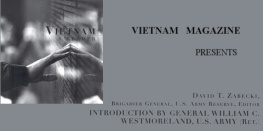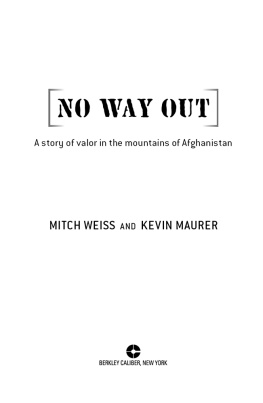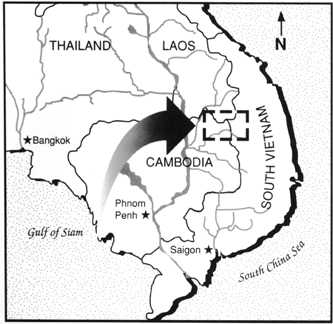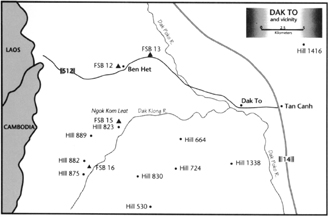INTRODUCTION
America's ten-year involvement in the ground war in South Vietnam began with a sea battle. Just past noon on 31 July 1964, the destroyer USS Maddox steamed into the Gulf of Tonkin, east of North Vietnam, on an electronic spy mission. Under the code name Desoto, the Maddox, bristling with electronic intelligence gear, would plot the location of enemy radar and radio installations by homing in on the signals emitted by the North Vietnamese stations tracking her. Meanwhile, skilled technicians would monitor North Vietnamese radio traffic, while others upgraded navigational charts by noting various landmarks.
Earlier that morning, while the Maddox sailed toward its location to the southeast of Thanh Hoa, her crewmen spotted four American-made Swift torpedo boats on the horizon. The aluminum-hulled PT boats were headed south toward Da Nang, South Vietnam, after conducting the first in a planned series of covert raids on North Vietnamese coastal military installations.
Though manned by South Vietnamese commandos, the Swift boats actually operated under the direction of the Studies and Observation Group (SOG), a top-secret counterinsurgency force reporting directly to the U.S. Military Assistance Command, Vietnam. Trained by U.S. Special Forces soldiers and Central Intelligence Agency (CIA) operatives, the commandos had been practicing for their mission since March. At a closely guarded base south of Saigon the commandos repeatedly rehearsed their tactics for seaborne infiltration and coastal bombardment. By the end of July the SOG operators decided their charges were ready for their first mission. On 31 July the raiders would strike radar and radio installations on Hon Me and Hon Ngu, two islands about 120 miles north of the demilitarized zone (DMZ) dividing the two embattled countries. If that mission went well the Swift boats would return three days later to shell a mainland radar station at Cape Vinh Son, south of Vinh, North Vietnam.
In their first attack the Swift boats were met by heavy defensive fire as they neared the enemy islands and were unable to land the commando teams. Instead, they fired several dozen rounds from their 40mm cannons at the North Vietnamese positions. The boats then turned for the open sea and set a course for home.
Aboard the Maddox the electronic eavesdroppers intercepted a flurry of radio messages about the raid. It was obvious the North Vietnamese were highly agitated by this, the first shelling of North Vietnam by sea. The Maddox had been briefed about the so-called A-34 raids but had paid scant attention to them; after all, they had no part in the covert operations.
But then the radio interceptors noted the increasing frequency of the use of the Maddox's hull numberDD-731 in the North Vietnamese messages. Obviously, the North Vietnamese were speculating about the destroyer's role in the raids. Seemingly unconcerned, the Maddox's skipper, Comdr. Herbert L. Ogier, simply ordered a heightened state of watchfulness and continued his mission.
Two days later, 2 August, the Maddox cruised past Hon Me. The ship's lookouts spotted three North Vietnamese torpedo boats lingering near the island. A few minutes later the eavesdroppers picked up a message ordering the torpedo boats to attack the Maddox. Ogier ordered his ship seaward at full speed.
A short time later the Maddox's radar picked up the three torpedo boats leaving Hon Me. With a top speed of fifty knots they would close on the destroyer in less than an hour. Ogier ordered his guns to fire when the boats closed to ten thousand yards.
At 1508 the ship's five-inch guns fired a salvo across the torpedo boats' bows. They kept coming. A few minutes later, with the boats approaching torpedo range, the Maddox let loose again. Still the boats came.
For the next twenty minutes the Maddox fired furiously at the three boats, sending great plumes of seawater skyward but scoring no hits. From twenty-seven hundred yards the North Vietnamese launched their first torpedo. Ogier turned sharply to port, averting the seaborne missile. Another torpedo cut through the water. Maddox dodged that one, too. Then, one of Maddox's shells finally hit a torpedo boat. It stopped dead in the water. Seconds later, another torpedo boat slowed as if hit. The third boat turned to assist the other two.
A few minutes later four F-8 Crusaders from the carrier Ticonderoga arrived on the scene. They strafed the North Vietnamese boats for five minutes, then departed. About that time Ogier received a message from his superiors ordering him to depart the area. He did.
News of the North Vietnamese torpedo attack electrified official Washington. After consulting with his key advisers, President Lyndon B. Johnson held a press conference. He announced to the world that he had ordered the patrols in the Gulf of Tonkin continued. Further, a second destroyer had been added to the patrols. The ship's commanders were ordered to retaliate against any force that attacked them.
On 3 August the Maddox, trailed by the Turner Joy, returned to the Gulf of Tonkin. Although that day passed uneventfully, the North Vietnamese kept up a constant stream of radio traffic reporting on the ships' progress. That same night SOG's Swift boats launched their second covert attack on North Vietnamese shore installations, shelling a mainland radar site for thirty minutes before withdrawing.
All day 4 August the electronic technicians aboard the Maddox











